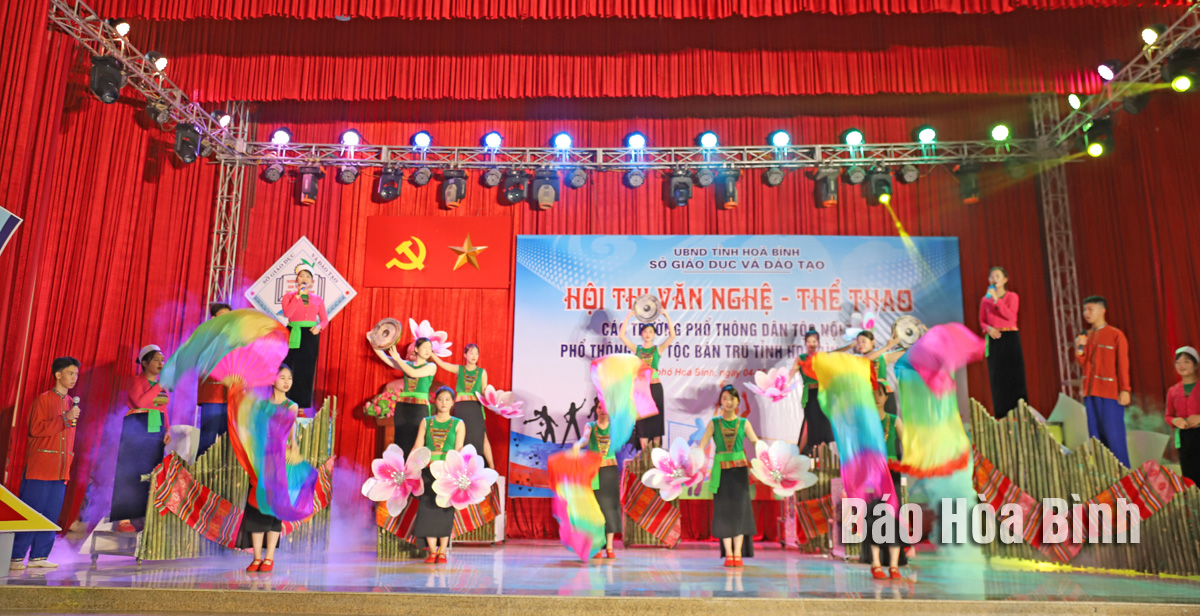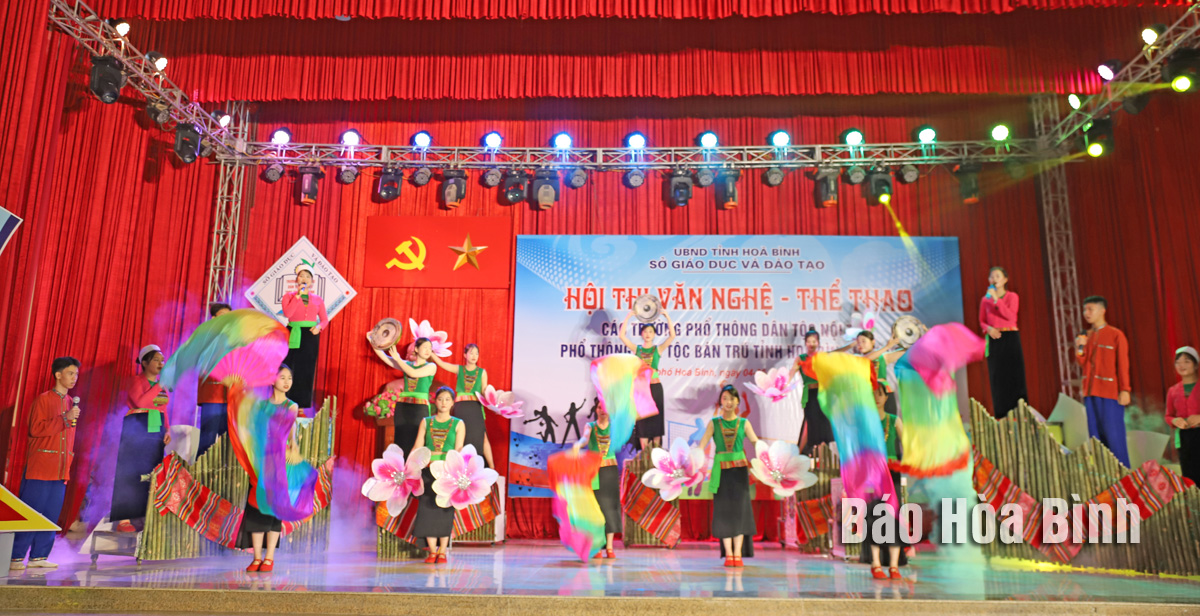
On October 4, at the Provincial High School for Ethnic Minorities, the Department of Education and Training held the opening ceremony for the 2024 Cultural and Sports Festival for Ethnic Boarding and Semi-boarding Schools in Hoa Binh Province.

The artistic performance
section at the Cultural and Sports Festival for Ethnic Boarding and
Semi-Boarding Schools in Hoa Binh Province in 2024.
The festival, held from
October 4 to 6, brought together over 850 students from 24 schools, including
11 ethnic boarding secondary and high schools, 11 semi-boarding schools, 1
ethnic boarding secondary school, and 1 ethnic boarding high school.
During the event, the
students competed in two main categories: cultural performances and sports. The
cultural competition featured singing, dancing, gong performances, and
traditional musical instrument displays with the themes focusing on love for
the homeland, and the country, praising the Party, Uncle Ho, and the schools.
The sports competition included three events: stick pushing, tug of war, and
volleyball.
The festival aimed to
enhance the political and ideological education, morality, lifestyle,
aesthetics, and physical health among students of ethnic boarding and
semi-boarding schools in the province. It also fostered a joyful atmosphere,
promoted exchanges and experience-sharing among the schools, and selected
outstanding performances and athletes to represent the province in the national
competition organized by the Ministry of Education and Training.
Hoa Binh province has carried out multiple programmes and initiatives to revive its cultural heritage which has gradually fallen into oblivion through the ebbs and flows of history.
The most prominent and defining feature in the prehistoric era of Hoa Binh is the Hoa Binh Culture. The Culture was first discovered in Hoa Binh. The significant prehistoric culture represents not only Vietnam but also Southeast Asia and southern China. Through excavations of cave sites in the limestone regions of Hoa Binh, French archaeologist M. Colani introduced the world to a "Stone Age in Hoa Binh province – Northern Vietnam" in 1927. On January 30, 1932, the First Congress of Far Eastern Prehistorians, held in Hanoi, officially recognised the Hoa Binh Culture.
Known as the "Land of Epic History”, Hoa Binh province, the gateway to Vietnam’s northwest, boasts a strategic location and a unique cultural tapestry woven by its ethnic minority communities.
The People's Committee of Luong Son District recently held a ceremony to receive the certificate recognizing Sau Communal House in Thanh Cao Commune as a provincial-level historical and cultural site.
Recognising the importance of cultural heritage preservation in protecting and promoting the value system of Vietnamese culture, and serving socio-economic development in the new period, Party committees and local administrations in Hoa Binh province have identified it as a key task in the cultural development strategy. The province has been making efforts in mobilising resources, creating consensus among people and engaging ethnic communities in preserving and promoting cultural identity.
Hoa Binh province has captured growing attention both domestically and internationally for its distinctive cultural heritage and rich history. Most notably, it has been renowned for its famous Hoa Binh culture, considered the cradle of ancient Vietnamese civilisation. Looking ahead to significant milestones in 2025 and the 140th anniversary of province establishment in 2026, Hoa Binh Newspaper presents a comprehensive overview of the province's development across economic, social, cultural, tourism, and security domains.



